Introduction: The Quiet Side of the Market
When you first dive into the world of financial markets, the focus often lands on big price swings, dramatic rallies, or sharp declines. We hear about volatility, about markets hitting new highs or crashing. But what about those times when markets seem… to do nothing? When prices barely budge, staying within a narrow range day after day?
These periods are just as significant for savvy investors and traders. Understanding what it means for a market or a specific security to be “trading flat” is crucial, not just for potential profitability, but also for managing risk and adapting your strategies. It’s a state that signals a unique dynamic at play, different from the explosive movements that dominate headlines.
In this comprehensive guide, we will explore the concept of trading flat across various asset classes. We’ll uncover its characteristics, delve into the reasons behind it, examine how to identify it using technical analysis and market clues, and discuss the challenges and surprisingly valuable opportunities these seemingly dormant periods present. Think of us as your guides through these calmer waters, helping you read the subtle currents.
While high-volatility environments might feel more exciting, periods of low volatility and limited price movement are normal phases of the market cycle. They reflect underlying forces and collective market sentiment just as much as a sharp trend does. Learning to recognize and navigate these phases is a critical skill for any serious participant in the financial markets.
- Identifying flat markets requires careful observation of price movements and external factors influencing trading patterns.
- Understanding the underlying economic conditions that lead to flat trading periods is essential for effective strategy formulation.
- Recognizing psychological aspects can help traders remain disciplined during flat market phases.

What Does “Trading Flat” Really Mean?
At its most fundamental level, the term “trading flat” describes a situation where the price of a financial asset shows little to no significant movement over a defined period. Instead of trending upwards or downwards with noticeable peaks and valleys, the price remains relatively stable, often oscillating within a very tight range. Imagine a flat line on a price chart – that’s the visual representation of this state.
This doesn’t mean there’s *zero* activity. Trades are still happening. Buyers and sellers are still interacting. However, the aggregate effect of their actions is balanced, leading to a state of market equilibrium. Neither bullish (buying) nor bearish (selling) forces are strong enough to push the price decisively in one direction. This can occur over short timeframes, like an hour, or extend for days, weeks, or even months.
The defining characteristic is the lack of a clear, sustained trend. The asset’s price is not making consistent higher highs and higher lows (an uptrend) or lower highs and lower lows (a downtrend). Instead, it’s moving sideways, bounded by relatively stable resistance and support levels. This sideways trend or range-bound movement is the core meaning of trading flat in the context of price action.
While the core idea is simple – limited price fluctuation – the specifics of “trading flat” can vary slightly depending on the asset class we’re discussing. It’s like saying a surface is “flat” – it means something slightly different whether you’re talking about a table or a vast prairie. We’ll explore these nuances in the following sections, looking specifically at how this concept applies to stocks, bonds, and forex.
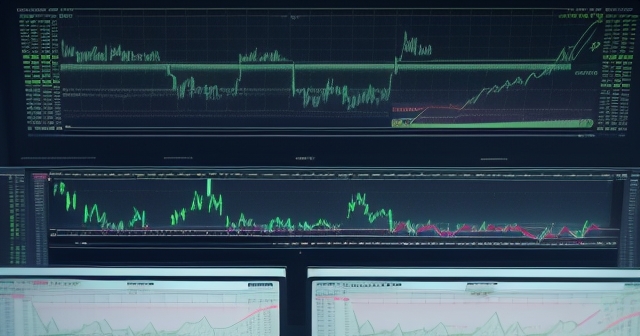
Trading Flat in the Stock Market: A Closer Look
When we talk about a stock or a stock market index trading flat, we typically mean its price is moving sideways. It’s not in a clear uptrend or downtrend. For individual stocks, this might mean the company is in a holding pattern – perhaps awaiting earnings reports, regulatory decisions, or major economic news that could impact its sector or the broader market. For major market indices like the S&P 500, the Dow Jones Industrial Average, or the Nasdaq Composite, trading flat suggests a broader market hesitation.
During such periods, investors might be waiting on the sidelines, unsure of the market’s next direction. This often results in low volatility and limited price movement. Trading volume may also decrease, reflecting this wait-and-see approach. It’s a period where the overall sentiment isn’t strongly positive or negative, but rather cautious or undecided. This state can persist until a significant catalyst emerges to tip the scales.
We sometimes see major indices trading mostly flat even when underlying concerns exist, like debates over tax bills, the growing U.S. deficit, or evolving trade tensions. This highlights that “flatness” doesn’t always mean a lack of issues; it can mean investors are struggling to price in the *net* impact of conflicting factors, leading to a temporary equilibrium. For example, positive corporate earnings from some companies might be offset by worries over rising Treasury yields or global supply chain issues, resulting in the index trading sideways.
Even within a broader flat market, individual stocks can still experience significant moves. You might see certain sectors or specific companies react strongly to idiosyncratic news, while the majority of the market remains subdued. For instance, in a lackluster session where the
Dow
is marginally up and the
Nasdaq
is marginally down, individual stocks like AMD might see gains based on sector-specific news (like AI developments), while others like American Eagle Outfitters might drop due to earnings reports. This divergence is common in flat broader markets.
Recognizing when the overall stock market or a specific stock is in a trading flat phase is vital for adjusting your trading strategy. Attempting aggressive directional bets in a market lacking direction is often a recipe for frustration and losses.
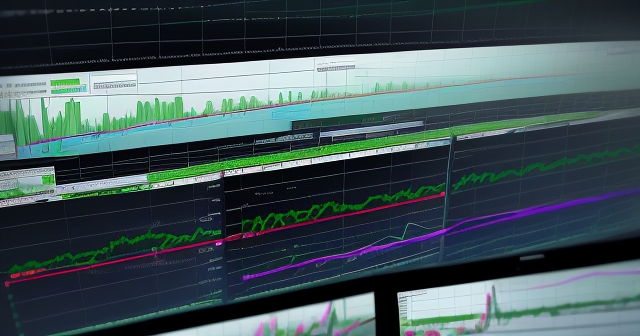
When Bonds Trade Flat: Beyond the Price
For bonds, the term “trading flat” has a slightly different, very specific meaning, particularly in the context of pricing. Normally, when you buy a bond, you pay not only its agreed-upon price (the clean price) but also the accrued interest that the bond has earned since its last coupon payment date. The total amount you pay is called the dirty price (clean price + accrued interest).
A bond is said to be trading flat when it is traded *without* any accrued interest. This usually happens in specific circumstances, primarily relating to the bond’s payment status or structure:
- Default: If a bond issuer has defaulted on its payments (missed a coupon payment or principal repayment), there is no legal obligation or realistic expectation of receiving future coupon payments on time. Therefore, the bond trades solely based on its principal value and any potential recovery prospects in restructuring or liquidation, *without* any component for interest that would have accrued under normal circumstances. This is a clear signal that the bond is distressed.
- Settlement Date: Sometimes, bonds trade flat simply because the trade settles on the same day as the coupon payment date. Since no time has elapsed between the last payment and the settlement, there is no period for interest to accrue. This is a technicality of settlement and doesn’t indicate distress.
- Zero-Coupon Bonds: Certain types of bonds, like zero-coupon bonds (which don’t pay periodic interest but are sold at a discount to their face value), inherently trade flat in this sense, as there is never any accrued interest component to add to their price. Their price accretion over time represents the implicit interest, but it’s not paid out periodically or accrued in the traditional sense.
So, for bonds, “trading flat” is less about price volatility and more about the *basis* upon which the price is calculated – specifically, the exclusion of accrued interest. It’s a technical term crucial for bond traders and investors and signals a specific condition, often related to the issuer’s financial health or a settlement peculiarity, rather than simply a lack of price movement.
Understanding this distinction is important. When a bond is trading flat due to
default
, it signals significant risk and distressed status. When it’s due to settlement or being a zero-coupon bond, it’s simply a pricing convention. Context is key.
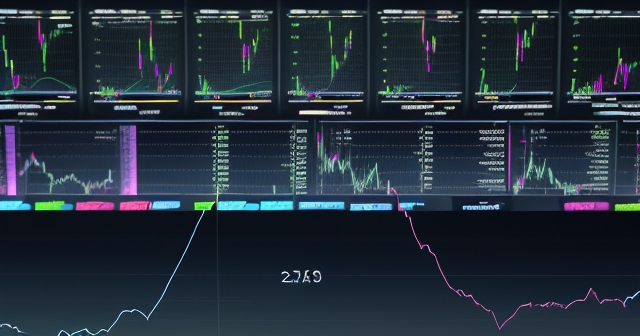
Flat Positions and Pairs in the Forex Market
In the forex (foreign exchange) market, “trading flat” can refer to two related but distinct concepts. Firstly, a trader can be said to be holding a “flat position.” This simply means you are currently neither long (betting the currency will go up against the paired currency) nor short (betting the currency will go down against the paired currency) on a particular currency pair. You have closed out any open trades and have no directional exposure to that pair. Your position is neutral. This is often done to manage risk, perhaps ahead of a major economic announcement or during a period of high uncertainty.
Secondly, a specific currency pair might be described as trading flat. Similar to stocks, this means the exchange rate between the two currencies is showing very low volatility and limited price movement over a period. This could happen if there’s a lack of major economic news from either country (like jobless claims or inflation data), if the central banks (such as the Federal Reserve or the European Central Bank) for those currencies are maintaining very stable monetary policy or signalling no immediate changes, or simply if market sentiment for that pair is neutral and supply/demand are in balance.
Identifying a currency pair trading flat involves looking for charts that show minimal fluctuation, tight trading ranges, and often lower trading volume compared to more active periods. For forex traders, recognizing this state is important because many common strategies rely on directional movement (trends) to generate profits from price changes. A flat market requires a different approach, often focusing on range-bound techniques or simply waiting patiently for a trend to emerge.
If you’re considering beginning your forex trading journey or exploring various Contracts for Difference (CFD) products, finding the right platform is key. Moneta Markets, based in Australia, is a platform worth considering. It offers over 1000 financial instruments, catering to both novice and professional traders.
The concept of a flat position is straightforward risk management, but a currency pair trading flat is a market condition that dictates the suitability of different trading strategies. Understanding the difference and knowing how to identify a flat currency pair are essential skills in the forex market.
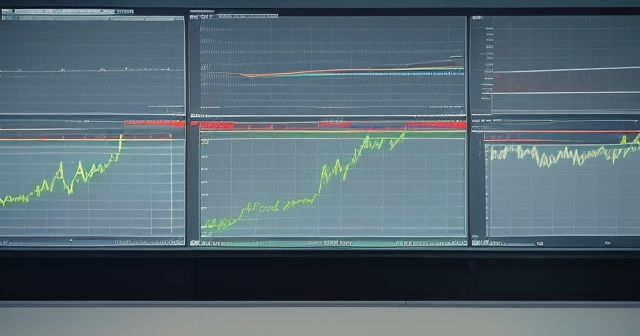
Identifying Flat Markets: Visual and Technical Clues
So, how do you spot a market that’s trading flat on your charts? It’s often a combination of visual cues and the signals from technical indicators. Price charts provide the most direct evidence of price behaviour.
Visually, a market that’s trading flat appears to be moving sideways on your chart. Instead of a clear upward or downward slope, you see the price bouncing back and forth horizontally between two relatively stable price levels, forming a trading range. The peaks and troughs don’t establish consistent higher highs and higher lows (indicating an uptrend) or lower highs and lower lows (indicating a downtrend). The price range within which the asset trades is noticeably narrow compared to periods of trending activity. This horizontal channel indicates that buying and selling pressures are roughly equal, resulting in a temporary stalemate.
| Indicator | Description |
|---|---|
| Moving Averages (MAs) | Short-term and long-term moving averages tend to converge and flatten out in flat markets, indicating stable price movements. |
| Relative Strength Index (RSI) | Typically hovers around the 50 level in flat markets, indicating no strong buying or selling pressure. |
| Bollinger Bands | Narrow significantly during flat periods, indicating reduced volatility and tight price range. |
Technically, several indicators can help confirm this sideways movement and lack of momentum:
- Relative Strength Index (RSI): This momentum oscillator typically hovers around the 50 level in a flat market (the line indicating ‘neutral’ momentum). It doesn’t reach overbought (above 70) or oversold (below 30) extremes, indicating a lack of strong, sustained buying or selling pressure needed to drive a trend. Its movements are often choppy and confined to the middle ground.
- Moving Average Convergence Divergence (MACD): The MACD lines (the MACD line and the signal line) tend to converge and stay close to the zero line. The histogram bars, which represent the difference between the MACD line and the signal line, are usually small and oscillate narrowly around zero, reflecting minimal momentum and lack of divergence.
- Average True Range (ATR): This indicator, which measures market volatility (the average distance between high and low over a period), will typically show lower values when a market is trading flat. Declining ATR confirms that the daily or hourly price swings are becoming smaller.
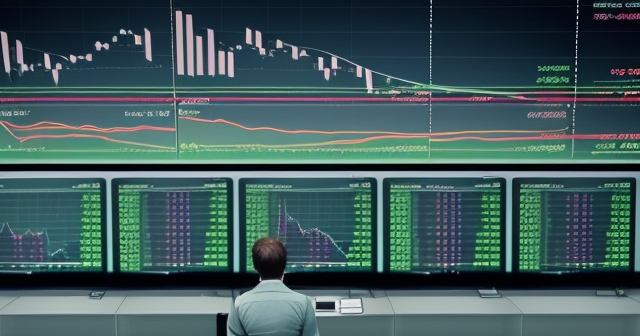
The Macroeconomics Behind Market Stasis: Why Markets Pause
While technical indicators help us *identify* a flat market, understanding the *causes* requires looking deeper at the economic and political landscape. Why do collective investors sometimes decide to hit the pause button, resulting in periods of trading flat?
A primary driver is often a lack of significant news or catalysts. Markets thrive on new information that changes the outlook for assets, companies, or the economy. When there are no major scheduled economic reports (jobless claims, inflation data, retail sales, manufacturing data) due, no significant corporate earnings releases from bellwether companies, or no pivotal political developments or policy announcements, there’s less fresh information for investors to react to decisively. This leads to investor hesitation.
Think about periods when the market is waiting for crucial commentary from the Federal Reserve regarding monetary policy or clues about future interest rate changes. Speeches or statements from Fed officials like Philip Jefferson, Austan Goolsbee, or Jerome Powell can dramatically shift market expectations regarding interest rates and inflation prospects. But in the quiet periods *before* such announcements, market participants might prefer to hold their positions, leading to trading flat. They are in a wait-and-see mode, unwilling to commit capital directionally until the path forward is clearer.
Furthermore, conflicting signals can create market equilibrium. Positive news from one sector might be offset by negative news elsewhere, or different pieces of economic data might point in contradictory directions. For instance, strong jobless claims data might indicate a healthy labor market, which is bullish, but concerns over the growing U.S. deficit (potentially exacerbated by tax bills or higher government spending) and rising long-term Treasury yields might weigh on sentiment, which is bearish for stocks. Optimism about certain technologies (like AI driving gains in stocks like Nvidia or AMD) provides support, but geopolitical tensions or supply chain issues introduce uncertainty.
This push and pull between competing positive and negative factors can result in sideways movement as these forces temporarily balance out. Neither the bulls nor the bears gain a convincing upper hand. The market is effectively digesting complex and sometimes contradictory information.
Trade tensions or policy uncertainty, like the debates surrounding U.S.-China tariffs or semiconductor policy, can also contribute significantly to caution and flat trading periods. Investors might delay major decisions until there’s more clarity on outcomes, such as the result of negotiations or the duration of a tariff truce. Conversely, a sudden resolution or new policy announcement can be the specific catalyst that *breaks* a market out of a flat period, leading to a new trend based on the revised outlook.
Sometimes, market unpredictability or a general economic slump can lead to investors holding back, reducing trading volume and contributing to flatter price action. In essence, flat markets often reflect collective uncertainty or a temporary balance of power between buying and selling pressures, fueled by the current economic and political environment and the flow (or lack thereof) of market-moving information.
Real-World Examples of Flat Trading Periods
Flat market conditions aren’t abstract concepts; they are a regular occurrence in the financial world, impacting various asset classes. We can look at historical data to see periods where major indices or specific assets exhibited this behavior.
Consider periods in the U.S. stock market where indices like the S&P 500 and the Dow Jones Industrial Average spent weeks or even months trading flat, contained within a relatively narrow range, despite ongoing news flow. This might happen, for instance, after a significant rally or sharp decline, as the market consolidates gains or digests losses while awaiting the next major economic data point, corporate earnings season, or policy announcement from entities like the Federal Reserve.
We might observe individual trading days that are particularly lackluster sessions, where the
Dow
finishes marginally up, the
Nasdaq
marginally down, and the
S&P 500
closes nearly unchanged. This is a micro-example of trading flat within a single session, indicative of the broader market hesitation or lack of strong directional conviction among traders and investors on that specific day, even if some individual stocks like AMD or American Eagle Outfitters show notable movement based on their own news.
Commodity markets also experience flat periods. The price of oil, for example, might trade within a tight range for an extended duration if supply and demand dynamics are stable, major producers (like OPEC) maintain consistent output levels, and there are no major geopolitical disruptions impacting production or transport. The market reaches an equilibrium price that satisfies current supply and demand, leading to limited price movement.
In the bond market, while the technical definition of a “flat bond” relates to accrued interest, bond *yields* (which are inversely related to bond prices) can also experience periods of low volatility and range-bound trading. This is particularly true for shorter-term Treasury yields when the Federal Reserve has clearly communicated its short-term interest rate policy and there’s little expectation of change. Long-term yields, influenced more by inflation expectations and deficit concerns, can be more volatile, but even these can settle into trading ranges at times if expectations stabilize.
Even cryptocurrencies, known for high volatility, can experience periods of trading flat. Bitcoin and Ethereum might trade within relatively narrow ranges for weeks or months after a major price move, as the market consolidates gains or losses and waits for the next significant catalyst, such as regulatory news, technological developments, or a shift in broader market sentiment towards risk assets.
These examples underscore that flat markets are not anomalies but a normal phase influenced by the collective information and sentiment prevailing in the market at any given time. Recognizing these past instances helps us understand that present or future flat periods are simply part of the natural market rhythm.
Opportunities and Challenges When Trading Flat
While flat markets might seem boring compared to trending ones, they present both unique opportunities and distinct challenges for traders and investors. It’s essential to understand these dynamics to adapt your approach effectively. Attempting to trade a flat market with strategies designed for trending conditions is often counterproductive.
Challenges of Trading Flat:
- Diminished Profit Potential from Directional Moves: The most obvious challenge is the lack of significant price trends. Many popular trading strategies, especially for beginners, focus on capturing profits from upward or downward movements. When a market is trading flat (moving sideways within a narrow range), these trend-following strategies are unlikely to be profitable and can even lead to losses due to whipsaws (false signals) within the tight range.
- Difficulty in Determining Clear Entry/Exit Points: Without strong momentum or clear support/resistance breaks, finding optimal points to enter or exit trades can be challenging. Prices might hover around potential entry levels or fail to reach projected targets. False breakouts from the narrow range are common, leading to stop-loss triggers without subsequent follow-through.
- Increased Importance of Transaction Costs: In a flat market where price movements are small, brokerage commissions, spreads (the difference between the buy and sell price), and slippage (difference between expected and actual execution price) constitute a larger percentage of any potential gain. This makes profitability harder to achieve, especially for frequent, short-term traders who are paying these costs repeatedly on small moves.
- Psychological Frustration: Flat markets can be frustrating for traders accustomed to faster-paced, trending environments. The perceived lack of opportunity can lead to boredom and potentially encourage impulsive or over-trading in an attempt to “make something happen,” often resulting in poor decisions.
Opportunities in Flat Markets:
- Stability and Risk Management: For conservative investors or those primarily focused on capital preservation, flat periods offer relative stability. The reduced volatility means less risk of large, sudden drawdowns compared to highly trending or erratic markets. It can be a good time to hold positions if you anticipate a later trend continuation but want to avoid turbulent periods.
- Range Trading Strategies: Experienced traders specialize in identifying and trading within range-bound markets. Strategies like buying near the support level of the range and selling near the resistance level (or vice versa) are specifically designed for these conditions. These strategies require precision, tight risk management, and confirmation signals at the range boundaries.
- Option Strategies: Certain options strategies, such as selling covered calls (if you own the underlying stock) or puts, or implementing neutral strategies like iron condors or iron butterflies, can be profitable in markets with low volatility and limited price movement. These strategies aim to profit from time decay (Theta) and the expectation that the underlying asset’s price will stay within a specific range until the options expire. They offer ways to generate income even when the price isn’t moving much.
Understanding this duality is key. Flat markets aren’t necessarily bad or devoid of opportunity; they simply require a different mindset and different tools compared to trending markets. Adaptability is a hallmark of a successful trader.
Strategies for Navigating Flat Market Conditions
Given the unique challenges and opportunities of flat markets, specific trading strategies are often employed. These differ significantly from the trend-following methods common in volatile environments. Let’s elaborate on some of the approaches traders use.
One common approach is Range Trading. This involves identifying the upper boundary (resistance) and lower boundary (support) of the trading range that the price is oscillating within. Traders look to initiate short positions (sell) when the price reaches the upper boundary, anticipating a move back down towards the support. Conversely, they look to initiate long positions (buy) when the price drops to the lower boundary, anticipating a bounce back towards resistance. Success with this strategy relies on accurately identifying the range, using confirmation signals (like indicator divergences or candlestick patterns) at the boundaries, and setting appropriate stop-loss orders just outside the range boundaries in case of a false or real breakout.
Options Strategies that benefit from low volatility and time decay (the decrease in an option’s value as its expiration date approaches) are also popular in flat markets. Selling premium through strategies like selling Out-of-the-Money (OTM) calls and puts, or constructing neutral strategies like Iron Condors or Iron Butterflies, can generate income as long as the underlying asset’s price stays within the expected range until the options expire. These strategies require a solid understanding of options Greeks (like Theta, which measures time decay, and Vega, which measures sensitivity to volatility) and careful risk management, as large moves outside the range can lead to significant losses.
For those who prefer simpler approaches or find active range trading too challenging due to potential false breakouts, Patience and Preparation is a highly valuable strategy. Use the flat period for observation and analysis. Identify the potential breakout levels that, if breached, could signal the start of a new trend. Study related markets or economic data that might serve as future catalysts. Refine your watchlists and develop potential trading plans for when a trend does emerge. This is the time to do your homework, conserve your trading capital, and position yourself to react quickly and effectively when the market eventually chooses a direction. Waiting for clear signals can prevent unnecessary losses from trading within a choppy range.
Another consideration, especially in the forex market or when trading CFDs on stocks, indices, or commodities, is the platform you use. When market movements are small, transaction costs like spreads become a more significant factor in your potential profitability. Choosing a broker with competitive pricing, tight spreads, and reliable, fast execution is crucial to maximize your chances of success with shorter-term trades or range-bound strategies.
If you are looking for a forex broker with regulatory protection and the ability to trade globally, Moneta Markets holds multiple international regulatory licenses, including FSCA, ASIC, and FSA. They offer segregated client funds, free VPS services, and 24/7 Chinese customer support, making them a preferred choice for many traders.
Ultimately, the best strategy depends on your experience level, risk tolerance, the specific asset class you are trading, and the context of the market flatness. But ignoring flat periods is not an option; understanding how to navigate them is a mark of a seasoned trader.
Case Study: Macro Events and the Break from Flatness
Flat markets are rarely permanent states. They are often periods of consolidation or indecision that precede a significant directional move. These moves are frequently triggered by the very macroeconomic and political factors we discussed earlier. Let’s consider how some elements from market data can act as catalysts that break a market out of a period of trading flat.
Imagine a period where the stock market indices like the S&P 500 and Dow Jones Industrial Average have been trading flat for several weeks, perhaps due to a lack of significant news and investor hesitation ahead of major announcements. Traders are using range-bound strategies or simply waiting. Then, key economic data is released – for example, a monthly inflation data report (like the CPI or PCE index) or updated jobless claims figures showing unexpected strength or weakness in the labor market.
If this data is significantly different from expectations, it can dramatically shift market sentiment. For instance, if inflation data comes in much lower than anticipated, it might fuel expectations that the Federal Reserve is closer to easing its monetary policy (potentially cutting interest rates). Investors will react decisively to this new information, potentially triggering a broad market rally as the prospect of lower borrowing costs improves the outlook for corporate profits and asset valuations. This surge in buying pressure breaks the previous market equilibrium and ends the flat period with a new uptrend developing.
Similarly, developments concerning the U.S. deficit or sudden significant movements in Treasury yields can act as catalysts. Concerns over a ballooning deficit, potentially leading to a credit rating downgrade by an agency like Moody’s, can create negative sentiment about the nation’s fiscal health. If this concern intensifies, it could lead to a broad market sell-off, particularly in stocks, as investors seek safer assets or factor in higher future taxes or interest rates. This rush to sell breaks the market out of its sideways pattern with a sharp downward move.
Conversely, positive resolution on trade tensions, such as a definitive tariff truce or a new trade agreement between major economies like the U.S. and China, can release pent-up optimism and fuel a rally. The removal of uncertainty and potential for increased trade activity improves the outlook for multinational corporations and the global economy, prompting investors to buy stocks, pushing indices higher and ending the flat phase.
These examples underscore the interconnectedness of market dynamics and the external environment. Flat periods are often reflective of a temporary pause as the market processes existing information or awaits new inputs. When those new inputs arrive, especially those impacting large-scale factors like economic growth, inflation, monetary policy, or geopolitical stability, the stage is set for a return to trending behavior, sometimes with significant volatility.
Beyond Price: Other Meanings of “Flat” in Finance
While the primary focus of trading flat relates to limited price movement, the term “flat” appears in other contexts within finance and trading, and it’s useful to briefly touch upon these to avoid confusion.
We’ve already discussed the flat position in forex, meaning you are neither long nor short, indicating zero net exposure to a particular currency pair. This is a state achieved by closing out all opposing buy and sell trades, resulting in a neutral stance.
In the context of futures or forward contracts, “flat price” sometimes refers to the price of the underlying asset itself, *without* including any costs of carry (like storage costs for commodities, or interest for financial assets). This is distinct from the futures price, which incorporates these factors. It’s another technical pricing term.
Regarding bond yields, a “flat yield curve” describes a situation where the yields on short-term, medium-term, and long-term bonds of the same credit quality are very similar. This contrasts with a normal (upward-sloping) yield curve, where longer-term bonds yield more than shorter-term ones, or an inverted yield curve, where shorter-term yields are higher than longer-term yields. A flat yield curve can signal market uncertainty about future interest rates and economic growth, and it can sometimes precede a recession.
While these specific uses of “flat” differ from trading flat as price stasis, they all share the common theme of neutrality, lack of difference, or absence of a typical component (like accrued interest or a steep slope). Understanding the context is crucial when you encounter the term “flat” in financial discussions.
For traders and investors, particularly those using platforms that offer a wide range of instruments including forex, commodities, and indices, being aware of these different meanings is part of building a comprehensive financial vocabulary.
To explore the various markets where these terms are used, including the ability to trade currency pairs and other instruments that might experience flat periods, choosing a versatile trading platform is beneficial. Moneta Markets offers access to over 1000 different financial instruments across various asset classes, available on platforms like MT4, MT5, and Pro Trader, allowing you to apply your knowledge of different market conditions.
The Psychology of Trading Flat Markets
Beyond the technical and fundamental analysis, the psychological aspect of trading flat markets is also worth considering. For many traders, especially those drawn to the fast-paced nature of financial markets, periods of low volatility can be challenging from an emotional perspective.
When markets are trading flat, the potential for quick profits from large directional moves is significantly reduced. This can lead to feelings of impatience or boredom. Traders might feel tempted to over-trade, taking positions on small, insignificant price fluctuations, or chasing minor moves within the tight range. This often results in increased transaction costs eating into potential profits and higher risk of losses due to being stopped out by small, erratic price swings.
The lack of clear trends can also erode confidence. Strategies that worked well in trending markets may fail repeatedly in sideways conditions, leading traders to question their skills or their approach. The absence of clear winners and losers during periods of market hesitation means there’s less reinforcement for any particular bias, contributing to uncertainty.
Successfully navigating flat markets requires discipline and emotional control. It’s a time to be patient, perhaps reduce your trading size or frequency, and focus on capital preservation rather than aggressive growth. It’s an opportunity to step back, review your trading journal, study different market conditions, and refine your strategies. The seasoned trader understands that not every market environment is conducive to aggressive trading and uses flat periods for preparation and risk management.
Developing the mental fortitude to remain disciplined during quiet periods is just as important as having a solid trading plan for volatile times. It’s about recognizing what the market is doing and aligning your actions with the current reality, rather than trying to force a narrative or chasing non-existent trends.
Conclusion: Mastering the Flat Market Cycle
The journey through financial markets isn’t always a series of dramatic peaks and valleys. Periods of trading flat are a fundamental part of the market cycle, representing moments of equilibrium, indecision, or quiet accumulation/distribution. They are phases where neither bullish nor bearish forces have managed to gain a sustained advantage, resulting in low volatility and limited price movement.
For you, as an investor or trader, recognizing and understanding these flat conditions is just as vital as identifying strong trends. They signal a shift in market psychology and dynamics, demanding a potential adjustment in your approach. Ignoring these periods or trying to force trending strategies upon them can lead to frustration and losses.
Instead of viewing flat markets as unproductive lulls, see them as opportunities – times for lower risk (if you adjust strategy), for precise range trading using tools designed for sideways markets, for employing specific options strategies that profit from time decay, or simply for diligent preparation for the inevitable next directional move triggered by new economic data, policy shifts, or corporate news. Mastering the art of navigating low volatility periods is a hallmark of experienced market participants.
By learning to identify the visual and technical clues of flat markets, understanding the underlying macroeconomic reasons for their occurrence (like investor hesitation driven by uncertainty over monetary policy, deficits, or trade tensions), and being prepared to employ suitable strategies or simply exercise patience, you can turn these seemingly quiet times into periods of learning, capital preservation, and preparation for future profitability. The ability to adapt to *all* market conditions, not just the trending ones, is what truly sets successful traders apart.
trading flatFAQ
Q:What is a trading flat market?
A:A trading flat market is one where the price of an asset shows little to no significant movement over a defined period, oscillating within a narrow range.
Q:How can I identify a flat trading market?
A:Indicators like moving averages converging, RSI hovering around 50, and price staying within a tight range can help identify a flat trading market.
Q:What strategies are effective in flat markets?
A:Range trading strategies, options strategies benefiting from low volatility, and patient preparation for potential breakouts are effective in flat markets.
